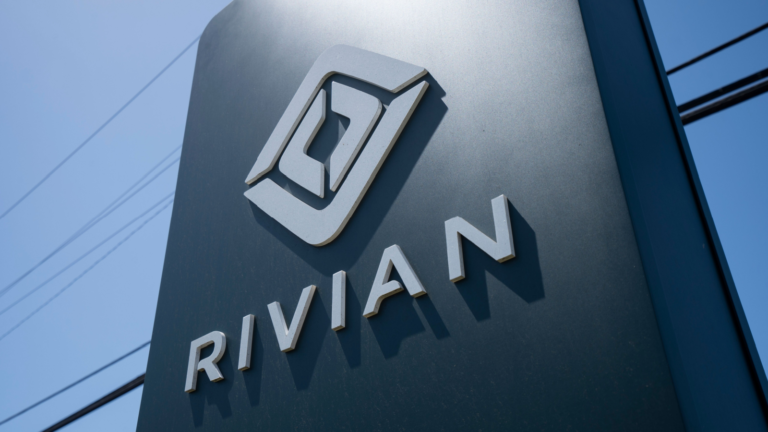Rivian (NASDAQ:RIVN) has greatly reduced its costs and continues to expect to generate positive gross profit in the fourth quarter of this year and in all of 2025.
There are multiple signs that the company’s brand remains extremely strong, driven by great, widespread appreciation for its EVs. Importantly, the automaker continues to have tremendous opportunities on many fronts. These include its partnership with Volkswagen (OTCMKTS:VWAGY); the launch of its new, less expensive EVs; its plans to enter Europe on a significant scale and signing new deals with large companies. Given this, I remain very bullish on the longer-term outlook of Rivian stock. I recommend that long-term investors buy the shares.
On a negative note, I was disappointed that the company’s deal with Morgan Olson, announced early this year, does not yet seem to have generated revenue for Rivian. But considering an automobile’s long production cycle, I still expect the agreement to move the needle for Rivian.
Rivian Is Making Meaningful Financial Progress
As I noted earlier, in conjunction with today’s release of Q2 financial, Rivian reaffirmed its commitment to generating positive gross margins in Q4 and in all of 2025. To move towards fulfilling this goal, the automaker has taken many steps to reduce its production costs.
For example, Rivian meaningfully lowered its material costs through technology and new deals with suppliers. It also cut commodity costs and sped up its production line by about 30%. Additionally, it plans to increase its gross margins by selling more EVs, lowering its depreciation expenses, selling used EVs for the first time and selling more regulatory credits. Moreover, Rivian intends to increase its revenue per vehicle by offering new, more expensive R1 EVs that feature a more high-powered engine called the Tri-Motor.
The automaker is already making progress on reducing its gross loss per EV sold. The metric fell to $32,705 in Q2 from $38,784 in Q1. Additionally, about $14,000 of the loss per EV represents non-cash costs such as depreciation and stock compensation. Moreover, Rivian has not yet sold many of its next-generation EVs that cost meaningfully less to produce, CFO Claire McDonough explained.
Continued Brand Strength and Huge Opportunities
Signs continue to mount that Rivian’s EVs are well-appreciated and the company’s brand power continues to improve. For example, CEO RJ Scaringe noted on the automaker’s Q2 earnings call that J.D. Power, in its annual APEAL Study that examines brand strength and product performance, rated Rivian as the top automaker.
Rivian expects its deal with Volkswagen to lower its costs by enabling it to pay less for supplies. And the joint venture the companies are establishing should generate significant revenue for Rivian. Additionally, Volkswagen has already invested $4 billion in Rivian. It is expected to provide the U.S. firm with another $4 billion.
Scaringe noted the automaker has made “some deliveries” of its delivery van in Germany. Yet the automaker is developing its upcoming R2 and R3 EVs to enable them to be sold in Europe. In light of higher EV adoption rates there than in the U.S., Rivian should generate large amounts of revenue there. That should lift its stock.
Speaking of the R2 and R3, Scaringe stated these EVs, whose starting price will be $45,000 or less, will be “capturing a sweet spot in terms of addressing demand for midsize SUVs in the U.S. and Europe.” Since the SUVs, which are slated to be launched starting in 2026, are relatively inexpensive, I agree with his assessment.
Finally, the CEO noted Rivian continued running pilot programs with companies other than Amazon (NASDAQ:AMZN) that might buy its delivery vans. I expect the sales of these vans to eventually move the needle on the top and bottom lines for the firm, lifting Rivian stock.
One Disappointing Omission
In the past, I’ve touted Rivian’s deal to provide its platform to van maker Morgan Olson and a subsequent deal by the latter to build vans for Canada Post using the platform. I was disappointed to see Rivian hadn’t produced revenue from the agreement last quarter. Since producing EVs generally takes a long time to start, the delay doesn’t surprise me. I still expect the Morgan Olson deal to lift Rivian stock over the long term.
On the date of publication, Larry Ramer held long positions in RIVN and AMZN. The opinions expressed in this article are those of the writer, subject to the InvestorPlace.com Publishing Guidelines.
On the date of publication, the responsible editor did not have (either directly or indirectly) any positions in the securities mentioned in this article.

